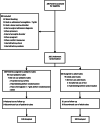Pediatric size phlebotomy tubes and transfusions in adult critically ill patients: a pilot randomized controlled trial
- PMID: 32782818
- PMCID: PMC7414662
- DOI: 10.1186/s40814-020-00657-3
Pediatric size phlebotomy tubes and transfusions in adult critically ill patients: a pilot randomized controlled trial
Abstract
Background: Transfusion of red blood cells (RBC) is common, can have adverse effects, and is a costly and limited resource. Interventions that reduce iatrogenic blood losses could reduce transfusions. The objectives of this pilot trial were to assess the feasibility (acceptability of the intervention and suitability of eligibility criteria) and potential effectiveness of pediatric size phlebotomy tubes in adult critically ill patients.
Methods: We conducted a pilot, randomized controlled trial in the medical intensive care unit (ICU) of a university-affiliated, tertiary care referral hospital from November 2017 to September 2018. A total of 200 patients with hemoglobin of at least 7 g/dL and without bleeding were randomized to pediatric or adult size phlebotomy tubes. Stratification was according to baseline hemoglobin (7-9.49 g/dL, 9.5-11.99 g/dL, and 12 g/dL or greater). Acceptability was measured via the number of blood test recollections and the number of patients that discontinued the use of pediatric tubes. The suitability of patient eligibility criteria was determined by identifying baseline characteristics associated with RBC transfusions. Potential effectiveness was estimated from the time to RBC transfusion or to hemoglobin level below 7 g/dL.
Results: The use of pediatric tubes was acceptable as patients experienced a low number of tests recollections (on average 1 every 57 days), and none of the participants discontinued their use. The baseline hemoglobin category was the only factor that appeared to be independently associated with RBC transfusions. A total of 6 patients (6%) in the pediatric tube group and 11 patients (11%) in the adult tube group (hazard ratio, 0.69; 95% CI, 0.25 to 1.9) received an RBC transfusion or reached hemoglobin below 7 g/dL. Almost all of these patients (16 of 17 participants) had baseline hemoglobin of 7-9.49 g/dL.
Conclusions: This pilot study suggests that pediatric phlebotomy tubes are acceptable to patients and can therefore be used in adult ICU patients. A future study should focus on patients with hemoglobin levels below 9.5 g/dL, as these patients have a high risk of transfusions. This intervention has the potential of being successful in selected patients. A definitive trial is warranted.
Trial registration: ClinicalTrials.gov, NCT03286465. Retrospectively registered on September 18, 2017.
Keywords: Blood transfusion; Clinical trial; Critical care; Phlebotomy.
© The Author(s) 2020.
Conflict of interest statement
Competing interestsThe authors declare that they have no competing interests.
Figures
References
Associated data
Grants and funding
LinkOut - more resources
Full Text Sources
Medical



